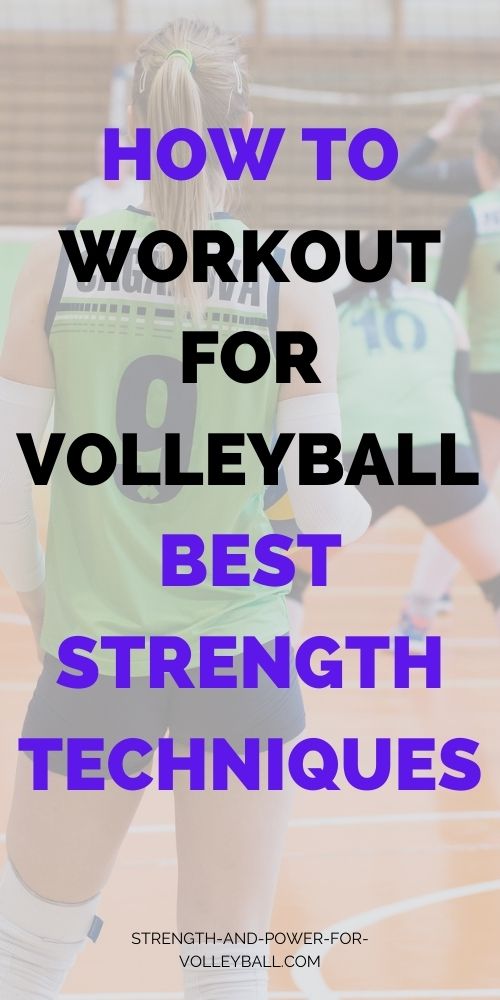Volleyball Workout Program
Key Exercises for Strength and Power
Volleyball workout program tips and exercises important for developing strength and power for volleyball.
Why Core Strength?
Core has become a popular buzzword in sports training and fitness industry. Countless articles and books have been written about how to produce six-pack abs.
The core is more than just the abs. The core is the midsection of the body from hips to shoulders.
The core is the basis for all movement.
Hip, core, and shoulder stability is known as pillar strength.
Core training will improve your balance, agility, timing, speed, endurance, and power.
If you think of your body as a wheel, the pillar is the hub, and the limbs are spokes.
If the hub is perfectly aligned, we can draw energy from it. We draw energy from it and effectively transfer energy throughout the body.
Using pillar strength when spiking
It's impossible to move the limbs (your arms) efficiently and
forcefully if they're not attached to something solid and stable.
When you spike a volleyball, you're not just using muscles in your arms.
Powerful spikes are the result of a strong powerful core.
Training body movements not body parts
The reason we focus on training volleyball movements and not body parts is because everything about the body's engineering is connected.
If there is dysfunction at one area of the body, other areas are
affected. For example, if you have an injured big toe, this will affect
the knees, the hips, and ultimately the shoulders.
Many volleyball workout programs do more harm than good by producing muscle
imbalances and inefficient movement patterns that sabotage your
highly coordinated operating system you were born with.
Developing Core Strength - It's more than just training the abs.
Training the Core - Volleyball Workout Program
Core strength training is not just about the abs. The abs are less than 1/3 of the equation.
Abdominal exercises are of little use for volleyball unless done in
conjunction with exercises aimed at integrating your shoulders and hips.
The muscles of the core will become strong and stable with the right
types of recruitment patterns that will enable them to work in
tandem with the shoulders and hips.
Transfer of energy
The core transfers energy from lower to upper body and vice versa.
Developing the core for volleyball
The key is recruiting muscles in the right sequence, training the whole body as an integrated system rather than isolated parts.
Your core muscles are the body's engine, and most movements initiate from there.
Your volleyball strength and conditioning program should include
exercises specific for improving volleyball core strength and power.
Strength Exercises that Incorporate the Core
Dumbbell Lunge Curl to Press
This is a great total body exercise to add to your volleyball workout program.
Keep shoulders back and over the hips. Chest should be up and out.
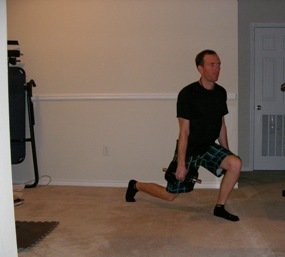
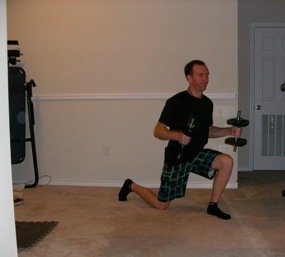
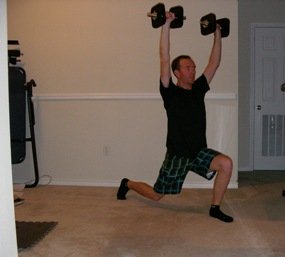
Step Up Curl and Press
Try not to push off too much with the opposite leg and make sure to control yourself as you step back down to the ground.
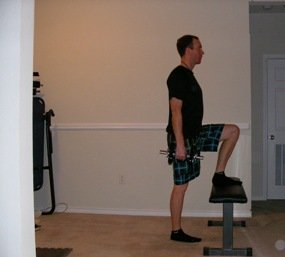
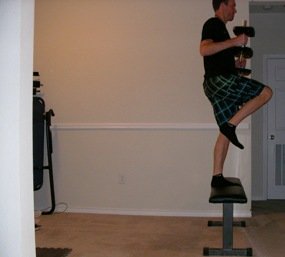
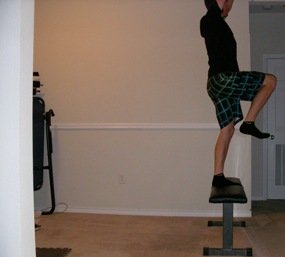
Standing Cable Rows
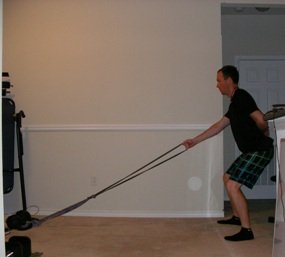

One Arm Dumbbell Row
This version of the row is much harder than the dumbbell row using a bench as support. An even more difficult progression would be to put the opposite hand on knee. This variation is very challenging because you must use your own core and body to support yourself instead of leaning against a bench.

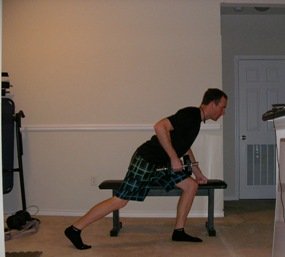
Stability Ball Push Ups - two feet on ball
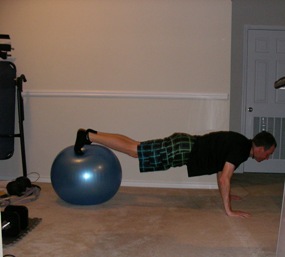
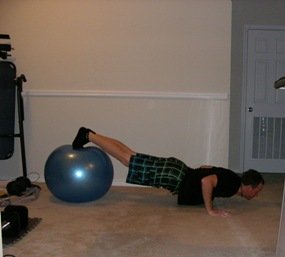
Alternating Dumbbell Lunge and Press
This exercise works the shoulders while utilizing leg and core strength. The alternating action of both the arms and legs requires coordination, timing, and balance - qualities that are essential for movements in volleyball.
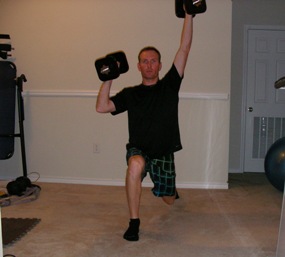
Single-Arm Dumbbell Overhead Walking Lunge
Start out with light weight and focus on perfect form. You're going to feel a good hip flexor stretch as well as a challenged core stability. Both of these add to the already valuable leg strength lunges provide.
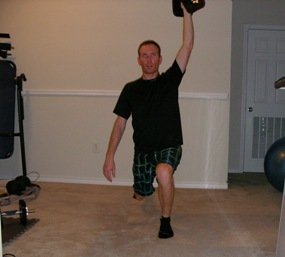
Overhead Plate Lunges
This exercise is challenging the body from head to toe. It's usually difficult to keep the arms straight, so we focus on pressing the ball upwards while lunging forward.
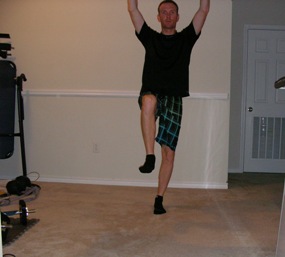

One-Arm Dumbbell Push Press
This exercise develops power and timing, provides an eccentric overload, and forces the athlete to brace on the opposite side. Be sure to stay level and don't cheat by leaning towards the unloaded side.
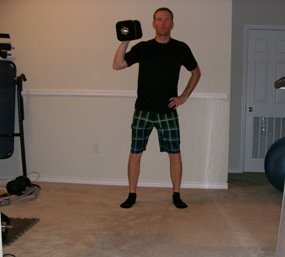
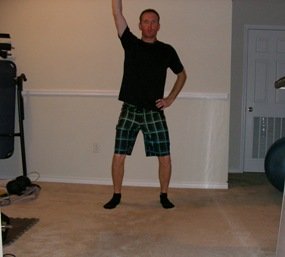
If you enjoyed these volleyball workout program tips and would like to keep it close to you at any time, just save this pin to your Pinterest Volleyball Training Board.
Volleyball › Workout for Volleyball › Workout Program
